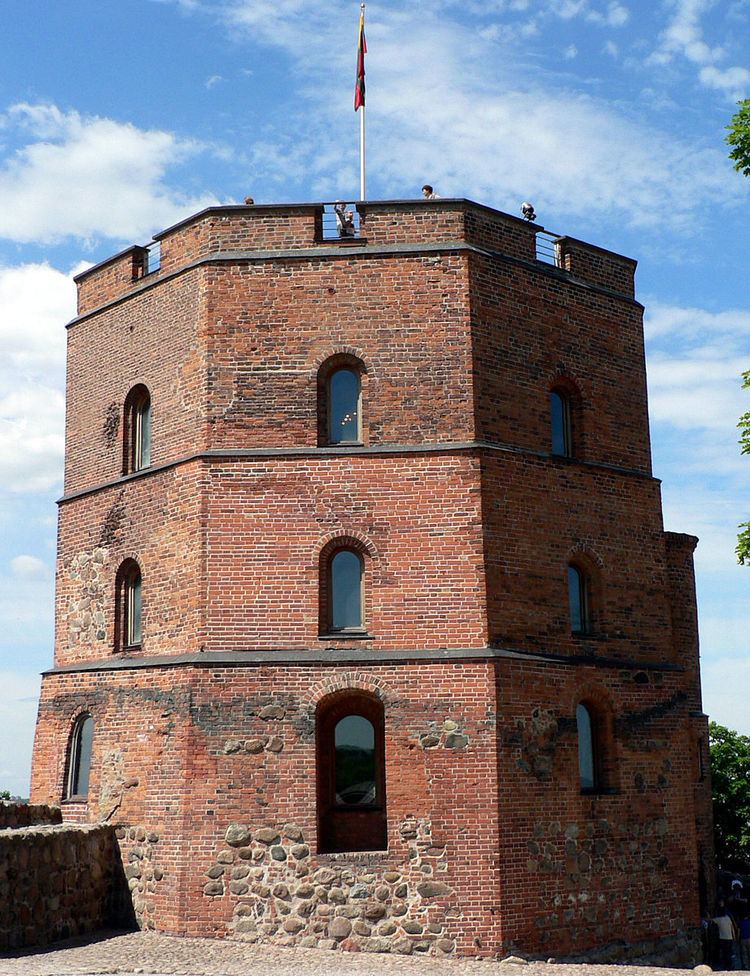Height 48 m Architect Jan Borowski | Phone +370 5 261 7453 | |
 | ||
Hours Open today · 10AM–6PMDay of Restitution of Independence of Lithuania might affect these hoursSaturday(Day of Restitution of Independence of Lithuania)10AM–6PMHours might differSunday10AM–6PMMonday10AM–6PMTuesday10AM–6PMWednesday10AM–6PMThursday10AM–6PMFriday10AM–6PM Similar Museum of Genocide Victims, Church of St Anne - Vilnius, Gate of Dawn, Three Crosses, Church of St Peter and St P | ||
Gedimino pilies bok tas gediminas tower
Gediminas' Tower (Lithuanian: Gedimino pilies bokštas) is the remaining part of the Upper Castle in Vilnius, Lithuania.
Contents
The first wooden fortifications were built by Gediminas, Grand Duke of Lithuania. The first brick castle was completed in 1409 by Grand Duke Vytautas. The three-floor tower was rebuilt in 1930 by Polish architect Jan Borowski. Some remnants of the old castle have been restored, guided by archaeological research.
It is possible to climb to the top of the hill on foot or by taking a funicular. The tower houses a museum exhibiting archaeological findings from the hill and the surrounding areas. The museum has models of Vilnius castles from the 14th to the 17th centuries, armament, and iconographic material of the Old Vilnius. It is also an excellent vantage point, from where the panorama of Vilnius' Old Town can be admired.
Gediminas' Tower is an important state and historic symbol of the city of Vilnius and of Lithuania itself. It was depicted on the former national currency, the litas, and is mentioned in numerous Lithuanian patriotic poems and folk songs. The flag of Lithuania was re-hoisted atop the tower on October 7, 1988, during the independence movement that was finalized by the Act of the Re-Establishment of the State of Lithuania on March 11, 1990.
A reconstruction of the Royal Palace of Lithuania was completed in 2009, and is located near the base of the hill upon which Gediminas' Tower stands.
Vilnius from gediminas tower
Legend
Long ago, the Lithuanian Grand Duke Gediminas was hunting in the woods of Sventaragis valley. The hunting was a success, but very tiring. The duke stayed there and spent a night. Gediminas had a dream that on top of the hill, where he had hunted down a taurus that day: a large iron wolf was standing and howling hard and loud, like a hundred wolves.
The Duke asked the mage Lizdeika to explain the dream. He explained that this was an omen indicating that he should build a city in this place, which would later become known around the world and would become the magnificent capital city of Lithuania.
Gediminas, obeying the will of the gods, began to build the future capital city, and a castle in the center of it. The city was named Vilnius after the nearby river Vilnia. Gediminas' Tower is one part of the castle, which was built by Gediminas.
